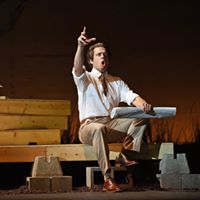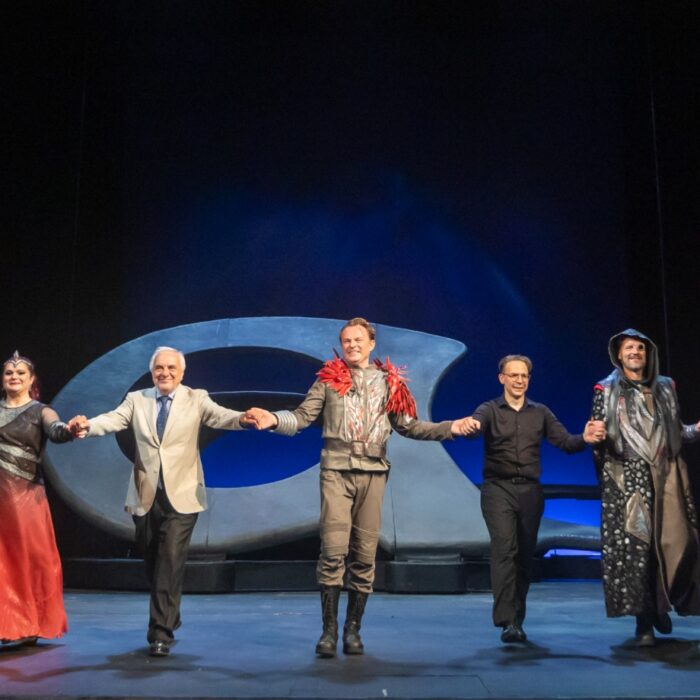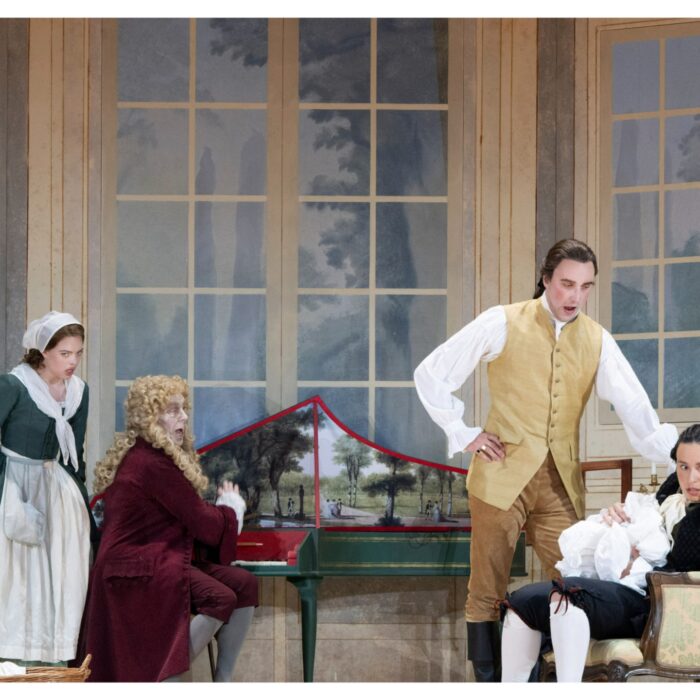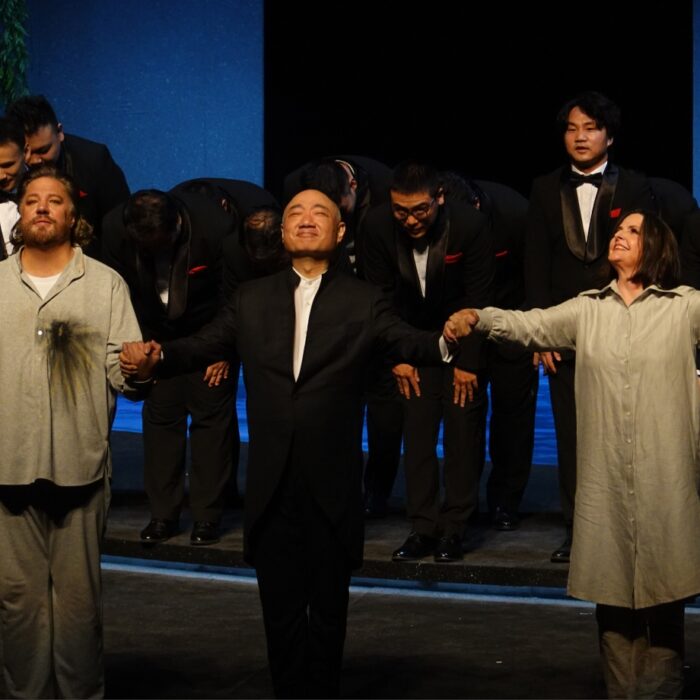
(Credit: Tim Trumble)
On Friday, September 27, 2019, Arizona Opera presented the West Coast premiere of composer Daron Hagen and librettist Paul Muldoon’s latest revision of their 1993 opera “Shining Brow.” As noted on the company’s website, this was the “Taliesin West Version” of the opera.
The opera tells the story of American architect Frank Lloyd Wright and his complicated life that includes an affair with a client’s wife, complicated relationships, murders, and a devastating fire that drove him to rebuild his life.
For the 2019 presentation at the Herberger Theater in Phoenix, Hagen and Muldoon pared the two-act opera down to an integral 100-minute single act.
Setting the Stage
Jacob A. Climer designed both the costumes and scenery for this production. The clean lines and earth tones of his tailored suits, detailed dresses and feathered millinery set the action firmly in the idyllic years of the early 20th century before the Great War. Unfortunately, Climer’s settings never transported the audience into Wright’s stated view of nature.
Projections would have been interesting, but they may not have been possible with the facilities available on the Herberger’s small stage. Christopher Strom’s lighting design helped define the Climer’s set pieces and building materials while providing the necessary ambience.
Stage director Charles Rader-Shieber told the story of Wright in a straight-forward, realistic manner and his production captured the audience’s interest even though there was more dialogue and introspection than outright action on the stage.
Wright and his paramour, Mamah, told their story of love and its consequences in an age where nature, the architecture they valued, and the art that surrounded, them dealt with a judgmental society.
Energy Personified
Baritone John Moore was an energetic Frank Lloyd Wright who almost never left the stage. This character had a long and arduous role in a short opera. He never seemed to tire or slow down and his mellow, honeyed tones flowed freely throughout the modest-sized house.
As Wright’s mentor, Louis Sullivan, dramatic tenor Bille Bruley pointed out some of the usual activity at Chicago’s exclusive and male-oriented Cliff Dweller’s Club which occupied space in the same building as the Chicago Symphony Orchestra. In the opera, Sullivan ordered glass after glass of crème-de-menthe and brandy while gradually losing his inhibitions while he sang of his fading relationship with Wright.
Dramatic soprano Laura Wilde, Santa Fe Opera’s clarion-voiced “Jenufa,” was the liberated, devoutly feminist Mamah who was not willing to sacrifice her rights to meet the needs of her husband and children. Eventually, she also realized that her relationship with Wright would never allow her equality. Muldoon puts it, “She would only be a codicil to his iron will.”
As Edwin Cheney, smooth-voiced baritone Michael Adams lost his wife Mamah to Wright. Like Mozart’s “Figaro,” he sang of horns growing out of his head as the orchestra backed up his claim.
Two young artists from Arizona Opera’s Marion Roose Pullin Studio sang smaller but important parts. Mezzo-soprano Katherine Beck was the long suffering Catherine Wright and soprano Cadie Jordan was a maid with copious free-flowing coloratura roulades.
Illumination
Unlike many new operas that try to cut costs, “Shining Brow” has a chorus of workmen who construct Wright’s buildings and interact musically with the soloists. One of the most beautiful musical moments occurs when everyone joins in singing a hymn. Master Henri Venanzi’s men flooded the theater with burnished masculine tone.
Hagen’s tonal music illuminated Muldoon’s text with translucent clarity as it flowed throughout the theater. Although this composer uses a combination of 20th and 21st century techniques, his finished score is easily accessible to the average listener.
He speaks of a debt to musical theater when he says, “Along with the intersection of loving music and words and singers, I adore the process of composing and going through the production of musical theater. There is the communion of people coming together to commit to undertaking a work of art that is larger than any of us.”
His opera works as a collaborative project and has a great deal of meaning for anyone studying or learning to appreciate Wright’s unique architecture.
With this performance, Russian-American conductor Lidiya Yankovskaya made a most impressive Arizona Opera debut. Her beat was cogent and her cues were always on time. She proves that it is knowledge, musicality, and administrative ability that bring a conductor to important podiums.


